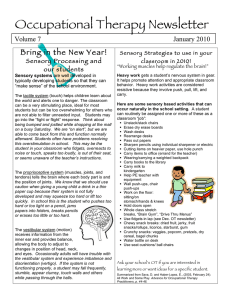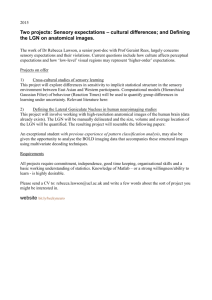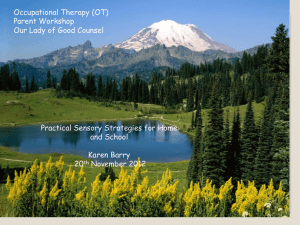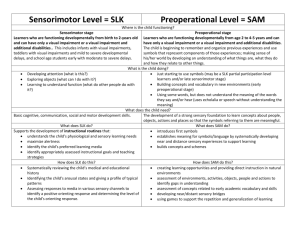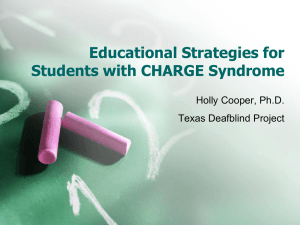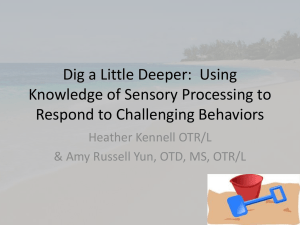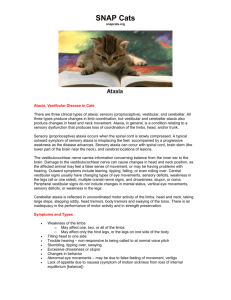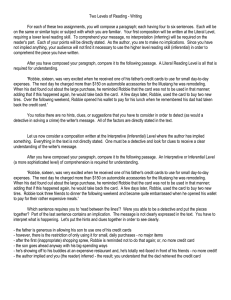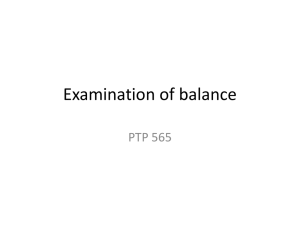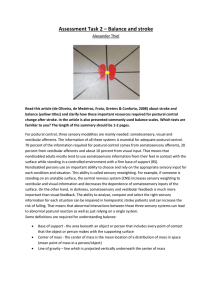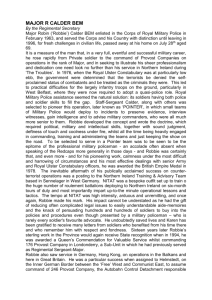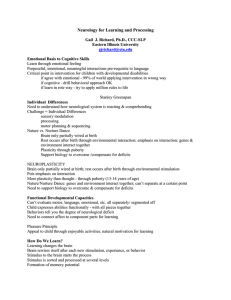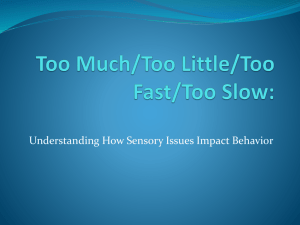Assessment of Students with MIVI
advertisement
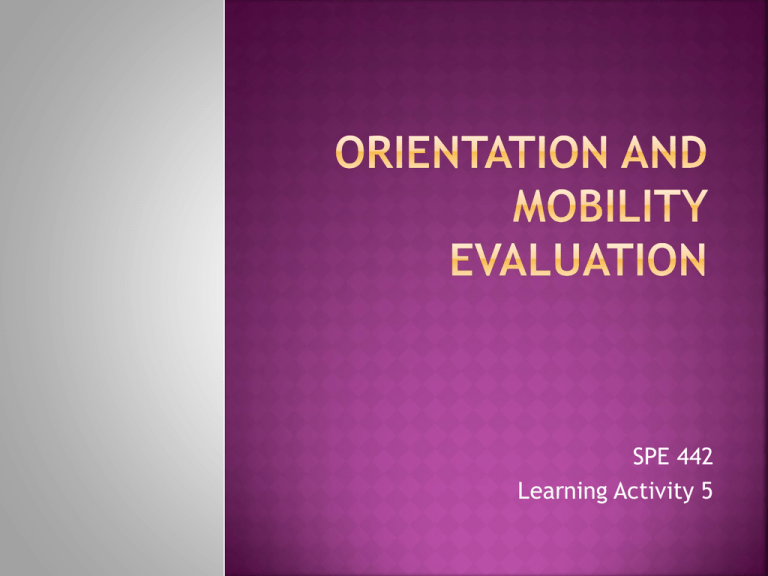
SPE 442 Learning Activity 5 Assessment Strategies and Tools Observations Analysis Teaming Video Joselin Audrey Emmanuel Oregon Project (0-6) Growing Up (0-6) Preschool O&M Screening (younger, delayed or non ambulatory) O&M Assessment: Early Years of Birth through Three Years Carolina Curriculum of Infants and Toddlers Purposeful Movement Checklist (Tanni Anthony) TAPS (K-12) AEPS (Assessment, Evaluation, and Programming System for Infants and Children) Callier-Azusa Age Ranges Orientation and Mobility/Community-Based Instruction Infusion Scope and Sequence Chart Foundations of Orientation and Mobility: Birth to Three Years Milestone Comparison Chart Comparison of Milestone Acquisition Times for Growing-Up and Prism Data “Developmental checklists and assessment tools used with other populations are not often sensitive enough to provide usable information to those charged with the instruction of this type of student.” “Children with profound disabilities may not exhibit the typical range of states” “Often these children have difficulty achieving and/or maintaining alert states.” Robbie Blaha (SEE/HEAR, Thoughts on the Assessment of the Student with the Most Profound Disabilities) ANY brain damage/trauma (CP, Stroke, Anoxia, Septo-Optic Dysplasia) Prior intervention Home setting/support system Other service providers OT PT Speech Nutrition APE ECI Observe child in quiet or controlled setting Does the child become over-stimulated and what does that look like. What happens when you introduce sound Look at hands, legs, muscle tone Watch processing time needed for motor planning Watch for awareness of body in space What is the child’s primary sensory preference? Auditory, Tactile, Visual, Gustatory, Olfactory, Vestibular or Kinesthetic “The inclination to move is based on how well the sensory information is received and interpreted by the brain.” “The vestibular system talks to and influences every other system.” “Body awareness is the foundation of O&M concept development.” (Mary Tellefson, MA, MS, COMS, Spatiotemporal Development Document) According to Robbie Blaha’s article you should also pay attention to: Bio-behavioral State Anticipation – indication of memory Use Routines Associations links events Does the sound, location, position, equipment, link events together? Habituations – Does the child no longer respond to a previous sensory stimulus Van Dijk (1985) says that the orienting reflex is a critical component in both assessment and instruction. “The orienting reflex readies the nervous system for further learning.” (Silverrain, 1991) PPCD Classroom Setting 4 years old Chromosome 6q deletion Nystagmus Strabismus Dysmorphic Optic Nerve Not Functionally Blind Moderate to Severe Auditory Impairment Current Services, VI, O&M,PT, OT, Speech Spend time observing Work as a team Just try it!! (equipment/variety) WAIT for results! “FUNCTIONAL for a student with severe impairments are skills that make the student a better consumer of the help provided for him or her” ….borrowed from unknown source.
